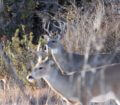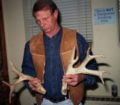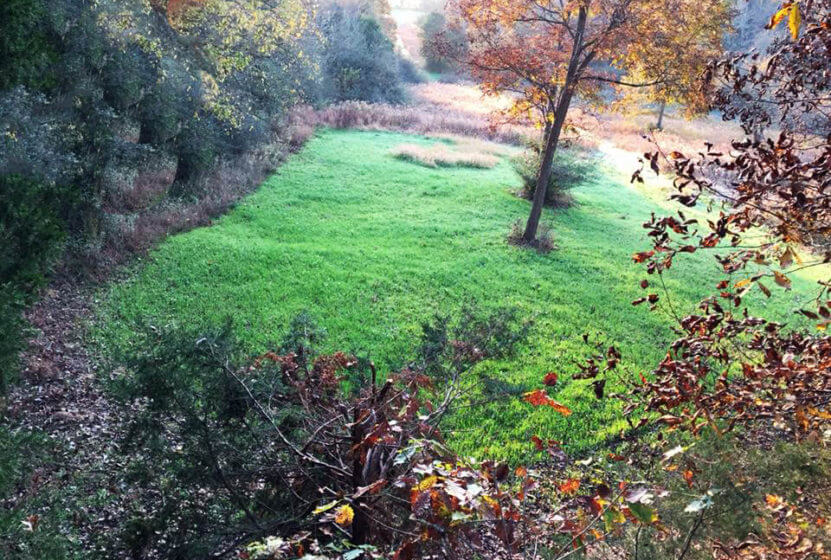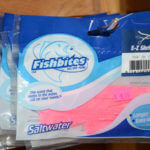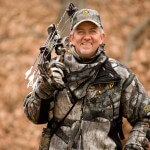Editor’s Note: Hunters are familiar with baiting deer by utilizing green fields and by putting a feeder on the edge of a green field. You also can ensure that deer will come to your region by fertilizing the areas already there. Using this invisible method, other hunters can’t learn your exclusive hunting hot spots. You can use an ATV spreader to fertilize wildlife openings.
 Most states don’t consider planting green fields or wildlife openings as baiting deer. But many of us don’t use green fields to attract deer due to the high cost of plowing, seeding and fertilizing. Dr. Keith Causey, a former wildlife professor at Auburn University in Auburn, Alabama, has discovered a less-expensive yet effective way to bait deer without using green fields. “If you fertilize the naturally-occurring plants in certain areas, deer will select those plants to feed on much more readily,” Causey comments. “For instance, if you fertilize one end of a large patch of Japanese honeysuckle, blackberries and greenbrier, deer will come to the fertilized patch.”
Most states don’t consider planting green fields or wildlife openings as baiting deer. But many of us don’t use green fields to attract deer due to the high cost of plowing, seeding and fertilizing. Dr. Keith Causey, a former wildlife professor at Auburn University in Auburn, Alabama, has discovered a less-expensive yet effective way to bait deer without using green fields. “If you fertilize the naturally-occurring plants in certain areas, deer will select those plants to feed on much more readily,” Causey comments. “For instance, if you fertilize one end of a large patch of Japanese honeysuckle, blackberries and greenbrier, deer will come to the fertilized patch.”
To concentrate deer, determine the naturally-occurring food the deer feed on throughout the year. Next fertilize certain patches of these plants. Then you’ll have some of the most-productive places to hunt throughout the season. For instance, in the South during the early season, deer often feed on poke sallett, which usually lasts for the first week or two of hunting season. If you fertilize one patch of poke sallett, you’ll attract deer there. Deer next may feed on greenbrier once the poke sallett disappears. A fertilized patch of greenbrier will give you a new place to hunt. As you continue to fertilize the deer’s preferred food, each time the deer change their feeding habits, you’ll have a new place to hunt. Because the South has a longer growing season than the North, and the South today has converted more to timber production rather than agricultural production, fertilizing native plants in the South may benefit the hunter there more than the northern hunter.
 “About 70 percent of the deer harvested in New York State are harvested around corn fields, winter wheat and clover fields,” Bob Wozniak, formerly of New York’s Department of Environment, Fish and Wildlife Division, says. “However, deer do browse on honeysuckle, white grapes, blackberry bushes and sumac. These native plants will be the best for most northern hunters to fertilize. In most areas where these plants grow, you can see that they’re well eaten-down by the deer, especially later in the winter. But in New York, hunters can find and pattern deer feeding on beech trees, acorn trees and abandoned apple trees much easier than native plants.”
“About 70 percent of the deer harvested in New York State are harvested around corn fields, winter wheat and clover fields,” Bob Wozniak, formerly of New York’s Department of Environment, Fish and Wildlife Division, says. “However, deer do browse on honeysuckle, white grapes, blackberry bushes and sumac. These native plants will be the best for most northern hunters to fertilize. In most areas where these plants grow, you can see that they’re well eaten-down by the deer, especially later in the winter. But in New York, hunters can find and pattern deer feeding on beech trees, acorn trees and abandoned apple trees much easier than native plants.”
However, fertilizing naturally-occurring plants throughout the season entails the same problem of continuing to fertilize green fields. No one wants to drag a bag of fertilizer into the woods during hunting season. That’s where your ATV with a spreader comes in handy to fertilize naturally-occurring plants throughout the season. And, although you’ve fertilized native plants to concentrate deer, most hunters can’t tell the difference between the fertilized and unfertilized plants.
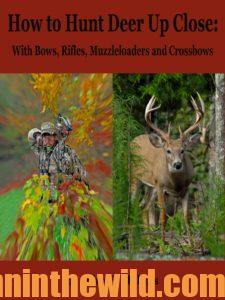 To learn more about hunting deer on your land, go to John E. Phillips’s book, “How to Hunt Deer Up Close with Bows, Muzzleloaders and Crossbows” https://www.amazon.com/dp/B00A2A6ZG6#.
To learn more about hunting deer on your land, go to John E. Phillips’s book, “How to Hunt Deer Up Close with Bows, Muzzleloaders and Crossbows” https://www.amazon.com/dp/B00A2A6ZG6#.
 To receive your free book on “How to Make Venison Jerky,” go to https://www.emailmeform.com/builder/form/Ece3UZVcOo52cKPJcL.
To receive your free book on “How to Make Venison Jerky,” go to https://www.emailmeform.com/builder/form/Ece3UZVcOo52cKPJcL.

